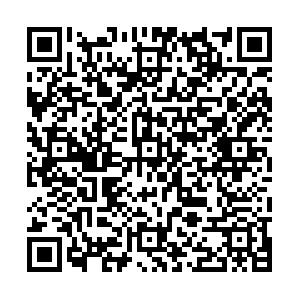Realistic Situation and Countermeasures of Promoting the Leading Force of Mainstream Ideology in Short Video Field in Institutions of Higher Education under the New Media Environment
-
摘要: 高校主流意识形态引领力在短视频场域的施力过程是主体、内容、渠道、客体四要素参与施力过程的集合,内蕴主体引导力、内容诠释力、渠道传播力、客体吸收力。在充满张力的短视频场域中,高校提升主流意识形态引领力既面临着“去中心化”的制作方式、算法技术应用模式、超符号系统、虚拟在场感增强施力效度的新机遇,也面临着多元化格局、碎片化信息、传播空间阻梗、媒介技术泛滥削弱施力效度的新挑战。这一现实境遇主要源于高校短视频平台建设相对滞后、内容供给乏力、宣发模式对短视频技术赋能回应不足、短视频用户角色过度赋权等原因,需要从增强施力主体的协同性、合理设置传播内容、拓展传播空间、增强施力客体主观能动性等方面加以破解。Abstract: The process of the exerting the mainstream ideological leadership of Institutions of Higher Education in short video field is a collection of four elements: subject, content, channel and object, which implies the leading force of subject, the explanatory power of content, the communication power of channel and the absorption power of object. In the tension-filled short video field, colleges and universities are facing the new opportunities of “decentralized” production mode, algorithmic technology application mode, hyper-symbolic system and virtual presence to enhance the effectiveness of exertion, and the new challenges of diversified pattern, fragmented information, obstruction of communication space, and the proliferation of media technology that weaken the effectiveness. This reality mainly stems from the relative lag in the construction of short video platforms in universities, the lack of content supply, the insufficient response of the communication and distribution mode to the technical empowerment of short videos, the over-empowerment of the role of short video users. It needs to be solved from the aspects of enhancing the synergy of the exerting subject, rationally setting the communication content, expanding the communication space, and enhancing the subjective initiative of the exerting object.
-
Key words:
- mainstream ideology /
- short video /
- leadship /
- institutions of higher education /
- new media
-
[1] 张志安,冉桢. 短视频行业兴起背后的社会洞察与价值提升[J]. 传媒,2019(7):52-55. [2] 中共中央党史和文献研究院. 习近平关于网络强国论述摘编[M]. 北京:中央文献出版社,2021. [3] 张梓琪. 移动互联时代大学生主流意识形态引领力研究[D]. 北京:中国矿业大学,2022. [4] 王力. 移动互联网思维[M]. 北京:清华大学出版社,2015. [5] 毛泽东. 毛泽东文集(第三卷)[M]. 北京:人民出版,1996. [6] 拉特利尔. 科学和技术对文化的挑战[M]. 吕乃基,译. 北京:商务印书馆,1997. [7] 尼葛洛庞帝. 数字化生存[M]. 胡泳,范海燕,译. 海口:海南出版社,1997. [8] 袁哲,王洪飞. 自媒体时代网络舆情治理的挑战与路径选择[J]. 科学社会主义,2020(1):94-98. [9] 尼古拉斯. 浅薄:互联网如何毒化了我们的大脑[M]. 刘纯毅,译. 北京:中信出版社,2010. [10] 金瑶梅,徐志军. 短视频时代主流意识形态话语权建构面临的挑战及其应对[J]. 思想理论教育,2020(9):88-92. [11] 郭晓真. 社交型短视频平台受众的媒介依赖研究[J]. 传媒,2019(1):54-57. [12] 林扬千. 关于大数据意识形态问题的思考:“数字利维坦”的生成与治理究[J]. 北京科技大学学报(社会科学版),2021,37(5):577-578. [13] 波兹曼. 娱乐至死[M]. 章艳,译. 北京:中信出版社,2015. [14] 马克思,恩格斯. 马克思恩格斯选集(第一卷)[M]. 北京:人民出版社,2012. [15] 马克思,恩格斯. 马克思恩格斯全集(第三卷)[M]. 北京:人民出版社,2002. [16] 马克思,恩格斯. 马克思恩格斯文集(第二卷)[M]. 北京:人民出版社,2009. [17] 罗国杰,马博宣,余进. 伦理学教程[M]. 北京:中国人民大学出版社,1985. -

 点击查看大图
点击查看大图
计量
- 文章访问数: 1525
- HTML全文浏览量: 412
- PDF下载量: 55
- 被引次数: 0



 下载:
下载:
